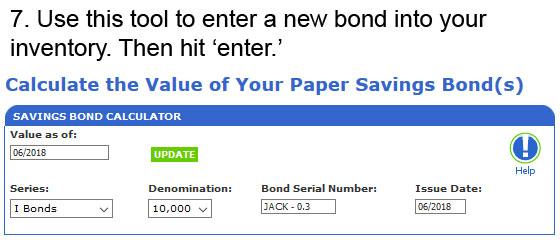The bond's serial number appears on the bottom right of the bond. Treasury Department currently issues only series EE and I bonds, and I bonds are the only ones available in paper form.
How To Find A Bond Serial Number

- The $50 bond serial number 6277 was issued on 1 May 1861. It was signed by Robert Tyler, son of President John Tyler, and H. It was engraved by Douglas Engr. Of New Orleans and pictures Commerce and Agriculture. A total of 7839 was issued. This is the thin paper variety. This is another of the earliest CSA bonds issued in Montgomery.
- Serial Bond Definition. Serial bonds, unlike bullet or term bonds that repay the entire principal at the time of maturity, repay it in installments at regular intervals, i.e., the entire issue consists of multiple securities or CUSIP of varying maturities and each such CUSIP or a bunch of CUSIP number matures at a different time according to a repayment schedule specified in the bond indenture.
Definition: A serial bond, sometimes called a serial note, is a debt security that matures and is payable at periodic dates during its term or life. Thus, it is repaid over a number of periods instead of one specific maturity date.
What Does Serial Bond Mean?

In other words, a serial bond matures in steps where a portion of the principle is payable at specific dates during the bond’s life. This is unlike a traditional bond that matures at one date with the complete principle payment coming due at the end of its bond term.
Example
Take a $50,000 five-year serial bond for example. This bond has a life of five years and could mature in five equal payments. This means that in addition to interest, the bond issuer would have to make a $10,000 principle payment each year until the full bond is paid off.

In contrast, a traditional five-year bond would pay interest for five years without making a single principle payment. Then at the end of the term, the bond issuer would have to repay the entire principle in one payment.
Investors often prefer serial bonds because they are guaranteed to get their investment back sooner. In this case, the bondholders would get a fifth of their investment back each year in addition to the interest.

If investors are unsure about the company and want to decrease their risk, they can also require that the issuer set up a sinking fund before the bonds are issued. This requires the bond issuer to set aside assets as a type of collateral for the bond payments.
Serial bonds are reported on the balance sheet of the bond issuer as a long-term liability. Conversely, the bondholder reports these investments on its balance sheet as a current or non-current receivable in the asset section.
Serial Number On Series Hh Bond
Contents